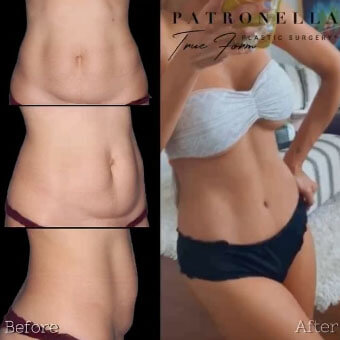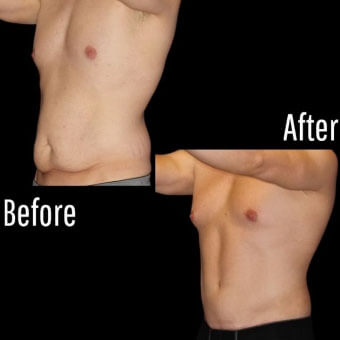Saline vs. Silicone Implants
Posted November 09, 2023 in Breast Augmentation, Breast Implant Replacement, Combined Breast Augmentation and Breast Lift, Uncategorized
By Dr. Chris Patronella
I’m often asked, “What’s the difference between a saline and a silicone implant?” and why would I use saline in one patient and silicone in another? Who are the best candidates for silicone vs. saline?
The first thing I’ll say is that despite what you may have read, there really is no visible difference between a saline and a silicone implant. It is very, very hard for anyone to see a difference in the implants. But there is a difference in the feel of the implants.
A saline implant feels a little firmer than a silicone implant, and some might perceive that as unnatural. Silicone implants have been around longer than saline implants. They were first used in the 1960s, and saline came along sometime after that.
The ideal candidate for a silicone implant is any woman with relatively small breasts who is relatively thin, whereby the implant is more palpable compared to someone who has more breast tissue and isn’t quite as thin. In the latter case, the difference between a saline and silicone implant becomes a little less noticeable.
A saline implant is filled with salt water. It has a silicone shell. The implant itself sometimes can be felt along the edges in a relatively thin woman. And, therefore, sometimes this is perceived as rippling of the implant.
A silicone implant can also have palpable edges and/or rippling, but it’s much less common than with a saline implant. A silicone implant is much softer and compressible than a saline implant.
Most women—probably 80 percent—will choose a silicone implant for the superior feel. Occasionally though, we’ll have a patient who prefers the saline implant for concerns regarding the relative safety of the two. I will say they’re both very safe implants. This has been studied for many years quite extensively, and the complication rates are very low with each.
The one issue that is quite different between saline and silicone implants is detectability should a rupture occur. When a saline implant ruptures, it’s quite obvious. A patient calls and says, for lack of a better way of phrasing it, “I have a flat tire,” because the implant does deflate completely, sometimes very quickly and sometimes over several days to a week.
A silicone implant, on the other hand, requires diagnostic studies—imaging tests—either a high-resolution ultrasound or an MRI, with the MRI being slightly more specific and used more commonly to detect ruptures.
I invite my patients back once a year following breast augmentation so that I can examine their breasts and examine their implants. On occasion, I can detect a silicone implant rupture, but not commonly.
Additional Links
Breast Augmentation Surgery with Dr. Patronella
Video: Breast Implant Revision and Replacement Surgery
Contact us today to schedule your consultation with Dr. Patronella. For our out-of-town patients, we also offer the option of a preliminary video conference with Dr. Patronella.







